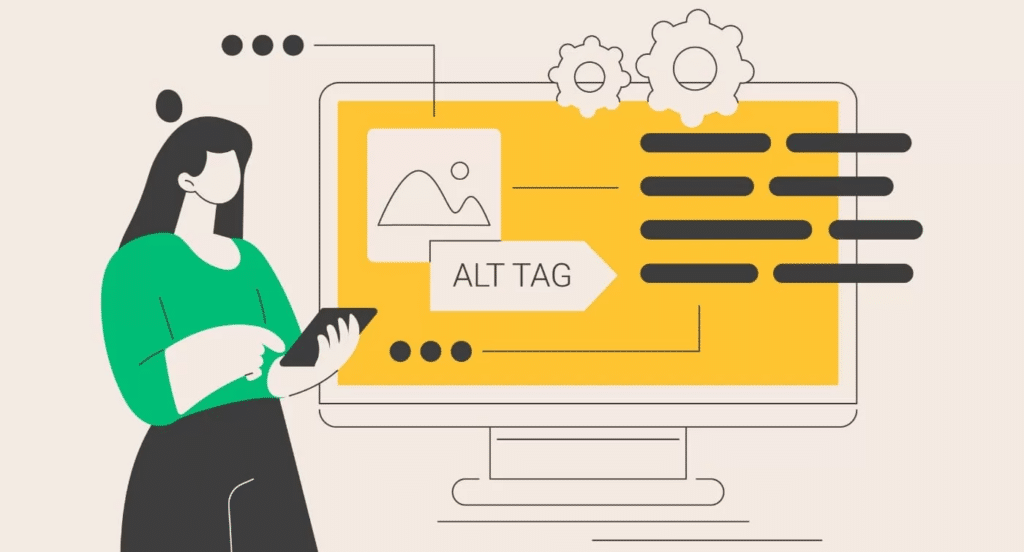Improving SEO with alt tags

Enhancing search engine visibility can be a meticulous task for webmasters and content creators. Yet, one of the simplest steps to achieve improved search engine optimization (SEO) is through the efficient use of SEO alt tags. This often-overlooked element can significantly impact your content's discoverability.
Within the realm of SEO, images play a critical role, but their value goes beyond mere aesthetics. Understanding the power of alternative text, or alt tags, can be the key to unlocking higher search rankings and broader audience reach.
The importance of alternative text in image optimization
Search engines are adept at reading text but still lack the ability to fully interpret images. This is where alternative text comes into play, acting as a descriptor that search engines can understand. Alt tags help in providing context to your images, explaining their content and relevance to your webpage.
Moreover, these tags play a crucial role in web accessibility, allowing those with visual impairments to comprehend the images through screen readers. Ensuring your website is accessible to all users can also be beneficial for your SEO performance, as search engines favor inclusive and well-structured sites.
By accurately describing your images with appropriate alt tags, you're ensuring that search engines can index your visual content—making it discoverable in image searches.
Best practices for crafting effective SEO alt tags
When composing alt tags, specificity is vital. Describe the image as precisely as possible and keep it succinct. You should integrate relevant keywords naturally, without falling into the trap of keyword stuffing, which can penalize your SEO efforts. An optimal alt tag is descriptive and contextually relevant to the content surrounding the image.
Remember to include the focus keyword, such as 'SEO alt tags,' where appropriate, to further boost your SEO strategy. This focus keyword should form a natural part of the image description.
Avoid using generic phrases like "image of" or "picture of," as they add no real value. Instead, concentrate on unique identifiers that effectively communicate the image's content.
Impact of alt tags on search engine rankings
An insightful implementation of alt tags can have a significant positive impact on your website's search engine rankings. Search engines aim to present the most relevant content to users. An image with a thoroughly crafted alt tag contributes to the relevancy factor and can push your content higher in search results.
The strategic inclusion of the term 'SEO alt tags' in both your visual and textual content increases the likelihood of ranking for that keyword. This synergy between images and text enriches the user experience, leading to longer website visits and reduced bounce rates, both of which are favorable signals to search engines.
Alt tags and user experience
Enhancing user experience should also be a key goal when utilizing alternative text. Informative and keyword-rich alt tags not only improve SEO but also the overall usability of your website. Users who may have disabled images in their browsers, or face slow connections, will still understand the visual content through the descriptive alt text.
Accessibility and its SEO benefits
Emphasizing accessibility with alt tags not only aids those who depend on screen readers but also aligns with SEO best practices. An accessible website attracts a wider audience, which can lead to increased engagement, sharing, and citations—all of which positively contribute to SEO.
Tools and techniques for optimizing alt tags
Several tools are available that can help automate the process of adding alt tags to images, but the best results often come from a manual approach. WordPress plugins like Yoast SEO provide features for managing alt tags in line with SEO goals. Google's Lighthouse is also a helpful tool for detecting images missing alternative text on your site.
Tracking the performance of alt tags
After implementing alt tags, it's essential to monitor their effectiveness. Utilize tools like Google Analytics and Search Console to track the performance of your image-based search traffic. Adjust and refine your alt tags as necessary to keep up with the evolution of SEO trends and search engine algorithms.
Common mistakes to avoid
Some common pitfalls in alt tag usage include overstuffing with keywords, neglecting to add them altogether, or copying and pasting the same text across multiple images. Each image should have a unique and relevant alt text, crafted to support both SEO and accessibility.
Continuous improvement of alt tag strategies
Improving your website's SEO is an ongoing endeavor. As you add new content, ensure that every image comes with a well-considered alt tag. Keep abreast of the latest SEO strategies and incorporate them into your alt text to maintain and improve your search engine rankings.
In summary, SEO alt tags are a vital component of a comprehensive SEO strategy. They serve the dual purpose of aiding accessibility while also enhancing your website’s presence on search engines. Remember to use descriptive, keyword-aligned alternative text that caters to both user experience and search engine criteria. With diligent application and regular performance monitoring, alt tags can significantly contribute to the SEO success of your content.

Related